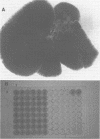Abstract
Strains of the freshwater cyanobacteria (blue-green algae) Anabaena flosaquae and Microcystis aeruginosa produced toxins that caused intermittent but repeated cases of livestock, waterfowl, and other animal deaths. They also caused illness, especially gastrointestinal, in humans. The most common group of toxins produced by these two species were peptide toxins termed microcystin, M. Aeruginosa type c, and anatoxin-c. A method was found to detect the toxins which utilizes their ability to cause agglutination of isolated blood cells from mice, rats, and humans. The method could detect the toxin in samples from natural algal blooms, laboratory cultures, and toxin extracts. The method consists of: (i) washing lyophilized cyanobacteria cells with physiological saline (0.9% NaCl), (ii) centrifuging the suspension and then mixing portions of the cell-free supernatant with equal volumes of saline-washed erythrocytes in V-shaped microtiter plates, (iii) allowing the mixture to stand for 3 to 4 h, and (iv) scoring the presence of the toxin as indicated by blood cell agglutination. Nontoxic strains, as determined by intraperitoneal mouse bioassay of cyanobacteria or green algae, did not produce an agglutination response.
Full text
PDF
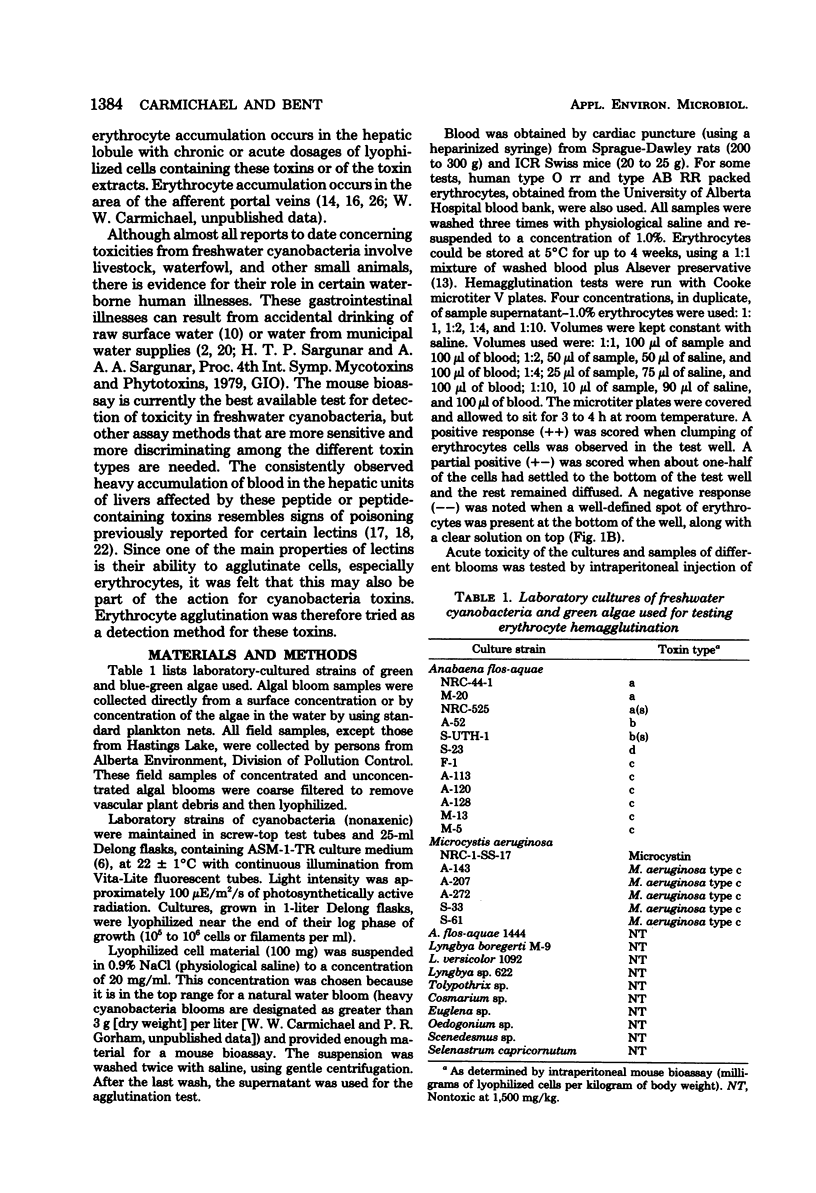
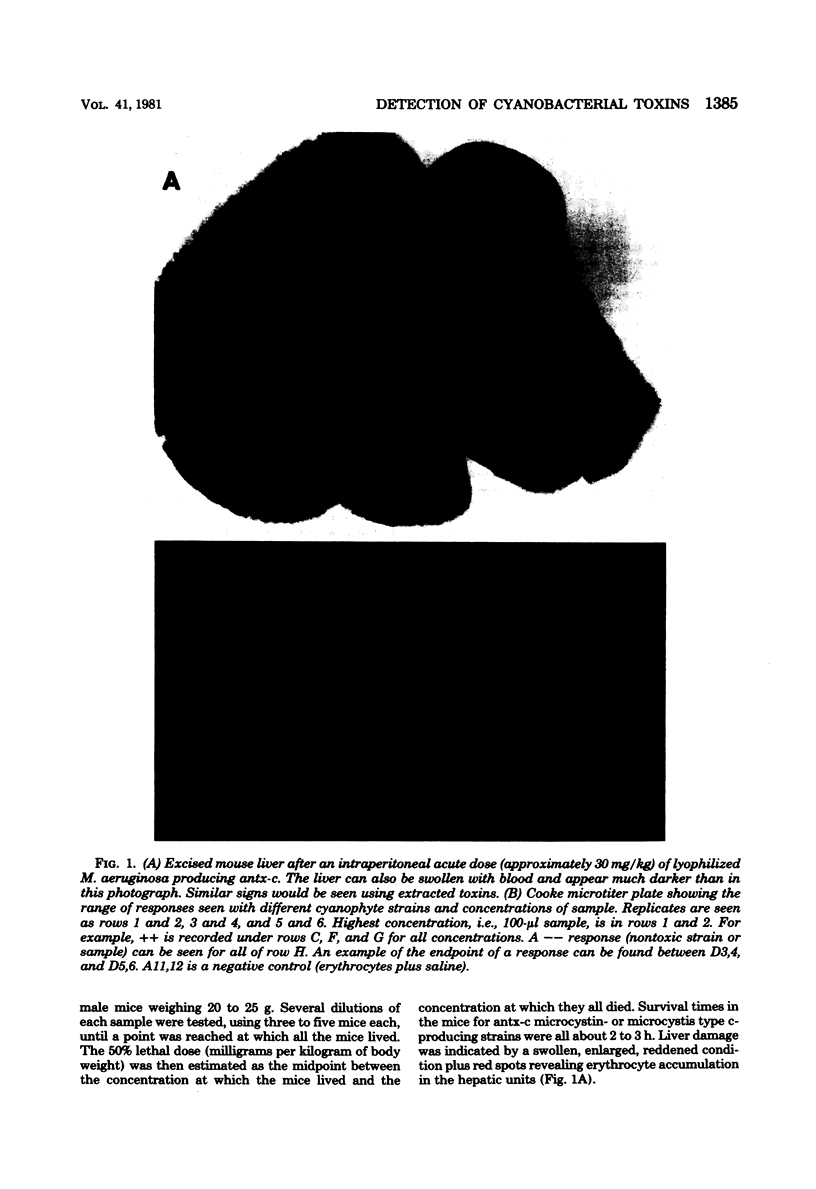

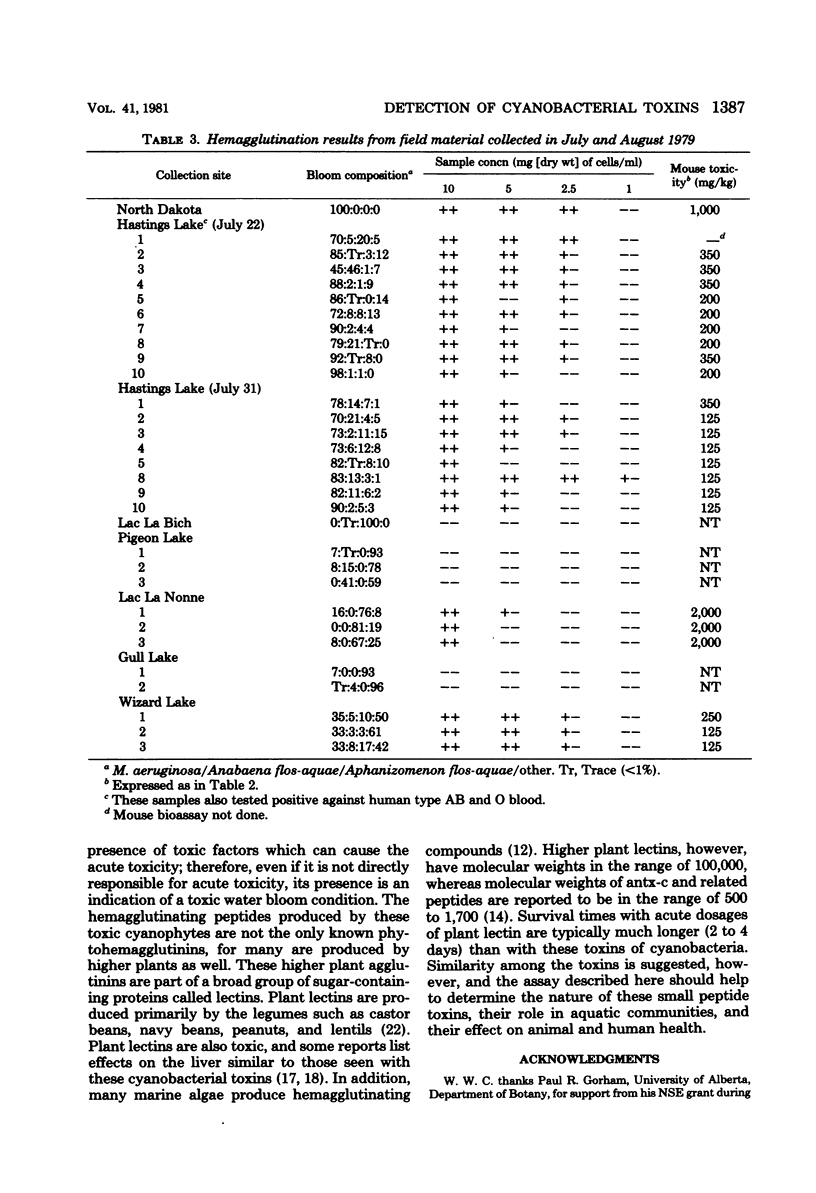
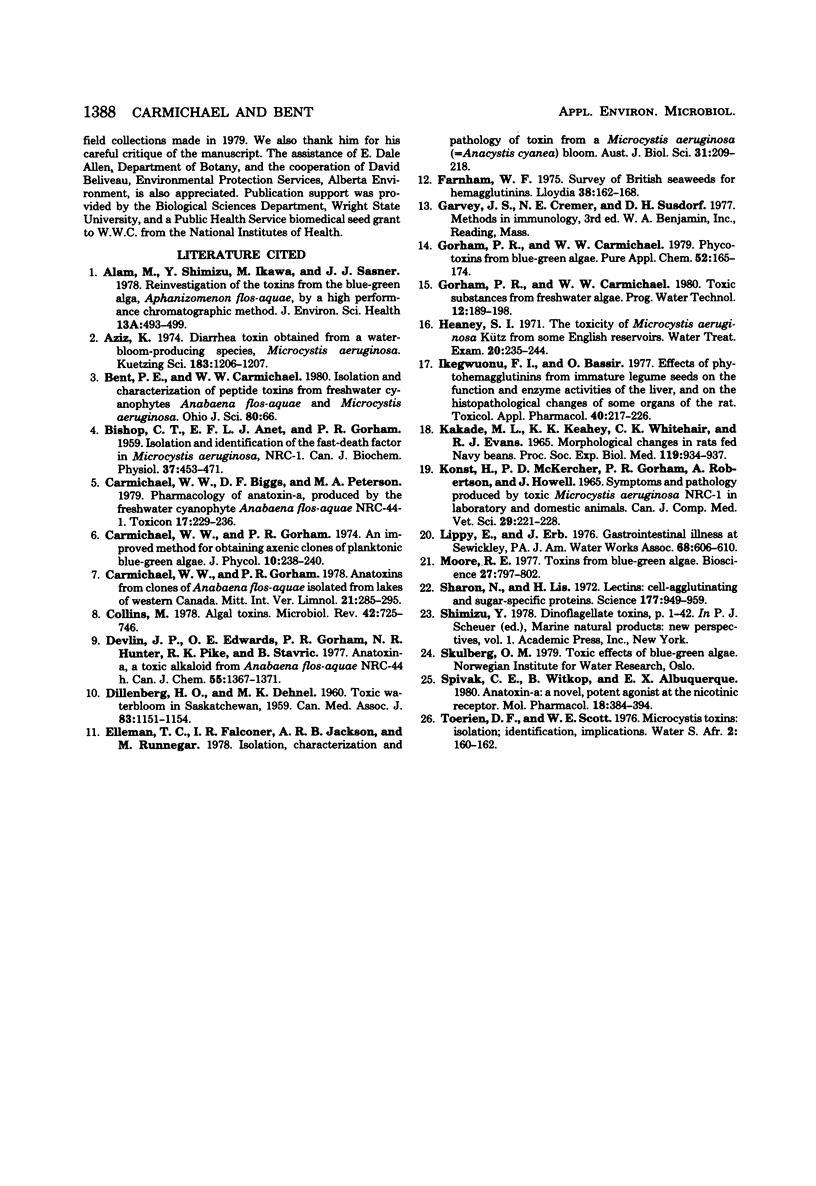
Images in this article
Selected References
These references are in PubMed. This may not be the complete list of references from this article.
- Aziz K. M. Diarrhea toxin obtained from a waterbloom-producing species, Microcystis aeruginosA Kützing. Science. 1974 Mar;183(130):1206–1207. doi: 10.1126/science.183.4130.1206. [DOI] [PubMed] [Google Scholar]
- BISHOP C. T., ANET E. F., GORHAM P. R. Isolation and identification of the fast-death factor in Microcystis aeruginosa NRC-1. Can J Biochem Physiol. 1959 Mar;37(3):453–471. [PubMed] [Google Scholar]
- Blunden G., Rogers D. J., Farnham W. F. Survey of British seaweeds for hemagglutinins. Lloydia. 1975 Mar-Apr;38(2):162–168. [PubMed] [Google Scholar]
- Carmichael W. W., Biggs D. F., Peterson M. A. Pharmacology of anatoxin-a, produced by the freshwater cyanophyte Anabaena flos-aquae NRC-44-1. Toxicon. 1979;17(3):229–236. doi: 10.1016/0041-0101(79)90212-5. [DOI] [PubMed] [Google Scholar]
- Collins M. Algal toxins. Microbiol Rev. 1978 Dec;42(4):725–746. doi: 10.1128/mr.42.4.725-746.1978. [DOI] [PMC free article] [PubMed] [Google Scholar]
- DILLENBERG H. O., DEHNEL M. K. Toxic waterbloom in Saskatchewan, 1959. Can Med Assoc J. 1960 Nov 26;83:1151–1154. [PMC free article] [PubMed] [Google Scholar]
- Elleman T. C., Falconer I. R., Jackson A. R., Runnegar M. T. Isolation, characterization and pathology of the toxin from a Microcystis aeruginosa (= Anacystis cyanea) bloom. Aust J Biol Sci. 1978 Jun;31(3):209–218. doi: 10.1071/bi9780209. [DOI] [PubMed] [Google Scholar]
- Ikegwuonu F. I., Bassir O. Effects of phytohemagglutinins from immature legume seeds on the function and enzyme activities of the liver, and on the histopathological changes of some organs of the rat. Toxicol Appl Pharmacol. 1977 May;40(2):217–226. doi: 10.1016/0041-008x(77)90092-8. [DOI] [PubMed] [Google Scholar]
- Kakade M. L., Keahey K. K., Whitehair C. K., Evans R. J. Morphological changes in rats fed navy beans. Proc Soc Exp Biol Med. 1965 Aug-Sep;119(4):934–937. doi: 10.3181/00379727-119-30340. [DOI] [PubMed] [Google Scholar]
- Konst H., McKercher P. D., Gorham P. R., Robertson A., Howell J. Symptoms and pathology produced by toxic Microcystis aeruginosa NRC-1 in laboratory and domestic animals. Can J Comp Med Vet Sci. 1965 Sep;29(9):221–228. [PMC free article] [PubMed] [Google Scholar]
- Sharon N., Lis H. Lectins: cell-agglutinating and sugar-specific proteins. Science. 1972 Sep 15;177(4053):949–959. doi: 10.1126/science.177.4053.949. [DOI] [PubMed] [Google Scholar]
- Spivak C. E., Witkop B., Albuquerque E. X. Anatoxin-a: a novel, potent agonist at the nicotinic receptor. Mol Pharmacol. 1980 Nov;18(3):384–394. [PubMed] [Google Scholar]



